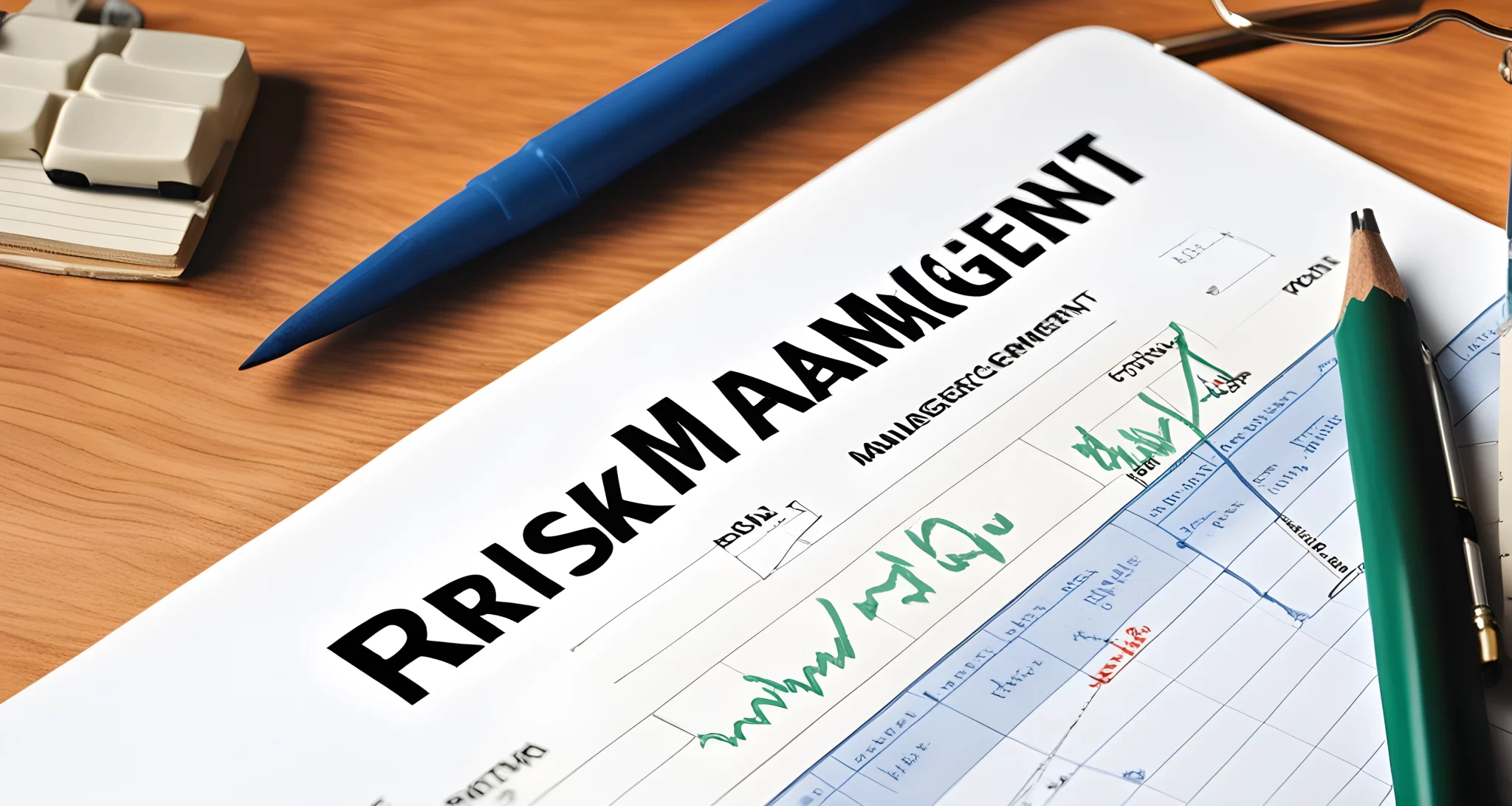Understanding Risk Management in Project Management
In the world of project management, risk management plays a crucial role in ensuring the successful completion of a project. It involves the identification, analysis, and response to any potential risks that may arise during the project’s life cycle. This proactive approach helps to keep the project on track and ensures that it meets its goals.
Risk management is not just about reacting to issues as they arise; it should be an integral part of the planning process. By anticipating potential risks and developing a plan to mitigate them, project managers can minimize the impact of these risks on the project’s timeline, performance, and budget.
Risks can come in various forms, such as changes in market conditions, unexpected resource constraints, or even natural disasters. These potentialities, when they become realities, are classified as "issues" that require a well-thought-out risk response plan.
To effectively manage risk in project management, it is essential to have a clear understanding of the project’s scope and objectives. This is where a clear project charter comes into play Maximizing Returns on Investments. By having a well-defined project charter, project managers can identify potential risks early on and develop strategies to address them.
Additionally, identifying and prioritizing risks is another critical aspect of risk management in project management. By categorizing risks based on their likelihood and impact, project managers can allocate resources effectively and focus on addressing the most critical risks first.
Developing a comprehensive risk management plan is also essential for successful risk management in project management. This plan should outline specific strategies for dealing with identified risks and establish clear roles and responsibilities for implementing these strategies.
In today’s digital age, utilizing project management software for risk tracking has become increasingly important. These tools can help project managers to centralize risk data, track risk responses, and monitor the effectiveness of risk mitigation strategies.
Overall, understanding risk management in project management is essential for ensuring the successful completion of projects. By taking a proactive approach to identifying and addressing potential risks, project managers can minimize their impact and increase the likelihood of achieving project success.

Importance of Clear Project Charter for Risk Management
A clear and detailed project charter is essential for effective risk management in project management. It serves as the foundation for the entire project, outlining the vision, objectives, scope, and deliverables Key to Investment Success. By having a well-defined project charter, risks can be identified and addressed at every stage of the project.
Engaging the entire project team, client representatives, and vendors in a risk identification session is crucial for ensuring a comprehensive understanding of potential risks. This collaborative approach allows for a more thorough assessment of risks from different perspectives, leading to a more robust risk management strategy.
Without a clear project charter, the project team may struggle to identify and prioritize risks effectively. This could lead to important risks being overlooked or not given the appropriate level of attention. Additionally, a lack of clarity in the project’s vision and objectives can result in misunderstandings and miscommunications, further amplifying the impact of potential risks.
Furthermore, a clear project charter provides a framework for decision-making when it comes to risk management. It helps project managers and stakeholders to align on risk tolerance levels and establish guidelines for managing and mitigating risks throughout the project lifecycle.
In summary, a clear project charter is vital for successful risk management in project management. It provides the necessary foundation for identifying, assessing, and addressing risks effectively. By ensuring that all stakeholders have a comprehensive understanding of the project’s vision and objectives, organizations can better prepare for potential risks and minimize their impact on project outcomes.

Identifying and Prioritizing Risks
Once risks are identified, it’s crucial to prioritize them in order to effectively manage them throughout the project. One way to do this is by logging them in a risk tracking template to categorize and rank their level of risk. This will help project managers understand which risks are most critical and require immediate attention.
In addition, creating a risk management plan is essential to capture both the negative and positive impacts of the project. By outlining the actions to be taken to deal with these risks, project managers can proactively address potential issues and capitalize on opportunities that may arise.
Regular meetings should be set up to monitor risk while the project is ongoing. Transparency is critical in these meetings, as it allows for open communication about any new risks that may arise and ensures that all team members are aware of the potential impact on the project.
Furthermore, it’s important to note that not all risks are negative. Some risks may present positive opportunities for the project, such as unexpected cost savings or process improvements. These should also be identified and prioritized in the risk management plan to ensure they are properly leveraged.
By effectively identifying and prioritizing risks, project managers can take proactive measures to mitigate their impact on the project’s success. It also allows for better resource allocation and contingency planning, ultimately leading to a more successful project outcome.
For more information on effective risk management strategies, check out Strategies for managing literacy risk for additional insights on how to effectively identify and prioritize risks in project management.

Developing a Risk Management Plan
Developing a risk management plan is essential in project management to capture both the negative and positive impacts of the project. This plan outlines the actions to be taken to deal with them effectively. Engaging the entire project team, client representatives, and vendors in a risk identification session is crucial to ensure a comprehensive understanding of potential risks.
Regular meetings should be set up to monitor risk while the project is ongoing, with transparency being critical. It’s important to have open communication channels to discuss and address any emerging risks promptly. Utilizing project management software for risk tracking can also streamline the process and ensure that all identified risks are properly documented and managed.
A comprehensive risk management plan also includes strategies for mitigating and managing risks that have been identified and prioritized. It’s important to consider both internal and external factors that could impact the project’s success. By developing a thorough risk management plan, project managers can proactively address potential threats and take advantage of opportunities that may arise.
For consulting firms, effective risk management strategies are essential for success in delivering high-quality services to clients. Consulting firm risk management Consulting firm risk management involves identifying potential risks associated with client engagements, internal processes, and external factors that could impact the firm’s performance. By developing a robust risk management plan, consulting firms can minimize potential negative impacts on their projects and maximize opportunities for success.
In conclusion, developing a risk management plan is an integral part of project management. It helps in identifying, prioritizing, and addressing potential risks throughout the project lifecycle. By engaging the entire project team, utilizing project management software, and maintaining transparent communication channels, project managers can effectively manage risks and ensure the successful delivery of their projects.

Utilizing Project Management Software for Risk Tracking
Project management software can be a valuable tool for tracking risks throughout the lifecycle of a project. With the help of software like ProjectManager’s Risk view, project managers can log and prioritize risks, as well as monitor them as the project progresses. This allows for a more proactive approach to risk management, rather than waiting for issues to arise.
One of the key benefits of using project management software for risk tracking is the ability to calculate the impact of each risk on the project. By quantifying the potential impact, project managers can make more informed decisions about which risks to prioritize and how to allocate resources for mitigation strategies.
Furthermore, project management software provides transparency and easy access to risk-related data for the entire project team, client representatives, and vendors. This ensures that all stakeholders are kept informed about potential risks and can collaborate on developing effective risk management plans.
In addition, using software for risk tracking allows for real-time monitoring of risks, enabling project managers to quickly identify any changes in the risk landscape and take necessary actions to mitigate potential impacts. This level of agility is essential in today’s fast-paced business environment.
By leveraging project management software for risk tracking, project managers can also streamline their risk management processes. This includes automating repetitive tasks, standardizing risk assessment methodologies, and generating comprehensive reports that provide insights into the overall risk profile of the project.
In conclusion, utilizing project management software for risk tracking is a critical component of effective risk management in project management. It provides the tools and capabilities necessary to log, prioritize, monitor, and mitigate risks throughout the lifecycle of a project.
For more information on mitigating risks in project management, check out Managing Risk is Vital article.
FAQ
What is risk management in project management?
Risk management in project management involves identifying, analyzing, and responding to any risk that arises over the life cycle of a project to help the project remain on track and meet its goals.
How can risks be effectively managed in a project?
To manage risks effectively, it’s crucial to start with a clear and detailed project charter that outlines the project’s vision, objectives, scope, and deliverables. engage the entire project team, client representatives, and vendors in a risk identification session to ensure a comprehensive understanding of potential risks.
What tools can be used to track risks in a project?
Project management software can help keep track of risks and calculate their impact. tools like projectmanager’s risk view allow you to log risks in a tracking template, prioritize their level of risk, and create a risk management plan to capture the negative and positive impacts of the project.
Why is transparency important in monitoring risks during a project?
Regular meetings should be set up to monitor risk while the project is ongoing, with transparency being critical. this allows for open communication and collaboration in addressing any issues that may arise.
